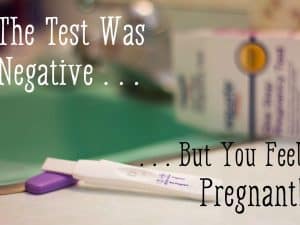Table of Contents
Did you notice vagina bleeding in your first trimester of pregnancy and wondered what it was and what caused it in the early pregnancy? No, not every bleeding you get when pregnancy means pregnancy loss or is a sign of threatened abortion, but this is perhaps the blood clots that form in the layers of the placenta that heal themselves in most cases known as the subchorionic hematoma. To know more about it and its causes, read on, we at Parenthood bliss will help you know everything you must know about this subchorionic hemorrhage.
What does subchorionic bleeding mean?
This subchorionic bleed or subchorionic hematoma is medically reviewed as the accumulation of blood formed between the uterine wall lining and the chorion, that is the outer fetal membrane, next to the uterus, or under the placenta.
This bleeding occurs as the light to heavy spotting or bleeding, or in cases, not. The good part is that this heals on its own in the women with them going forward to have a perfectly healthy pregnancy. However, to avoid any pregnancy complications or increase the risk due to blood clots, they are monitored.
How does this vaginal bleeding differ from other kinds of bleeding?
According to health information, Subchorionic hematoma is the only cause of bleeding that takes place in early pregnancy. However, the causes are yet unknown as it isn’t the same as another spot.
Also, according to the American College of Obstetricians and Gynecologists, this pregnancy outcome of bleeding occurs in about 15 to 25 percent of women during their first trimester. The causes of spotting include:
- Implantation
- Uterine Expansion
- Intercourse
- Increases in hormone level
- Any change in the cervical including the cervical polyps
- Vaginal exams
It is always a good idea for pregnant moms to report any form of spotting to their doctor. This is as the bleeding could increase from just spotting to where one might need pantyliners indicating something else other than the subchorionic bleeding. Additionally, in most cases, one might not even realize it until the doctor performs an ultrasound.
In case of heavy bleeding, it could be a sign of:
- Ectopic pregnancy takes place when an egg is fertilized outside of the uterus
- Miscarriage
- Molar pregnancy is a rare condition resulting in a mass of tissue in the uterus
- A rupture in the uterine
- A separation of the placenta from the uterus
- In cases of preterm labor that occur earlier than 37 weeks
The above-mentioned vaginal bleeding is more serious as compared to the subchorionic bleeding that is accompanied by other symptoms like severe abdominal pain and dizziness.
How common is it?
Around 1 percent of all pregnancies, women have a subchorionic bleed that seems to be more prevalent in women who got pregnant through IVF. Subchorionic bleeding during pregnancy is a common cause that takes place in the first trimester and occurs in uncomplicated pregnancies.
Symptoms of subchorionic bleeding?
This vaginal bleeding could be hard to diagnose as they are hard to pick up as they don’t always result in noticeable symptoms, especially in the initial stages with only the spotting as a sign at the beginning of the first trimester. However, this is most commonly detected in an ultrasound without there being any noticeable signs or symptoms.
What are the risks of the subchorionic bleed? And when must you be concerned?
This bleeding during pregnancy is majorly dissolved on its own according to health information. But, in most pregnancy outcomes, a subchorionic bleed results in the separation of the placenta from the uterine wall that increases the risk of a pregnancy loss with an elevated risk of miscarriage and preterm labor. For this reason, even though the subchorionic hematomas are cured on their own, they must be reviewed by the doctors right away if experiencing vaginal bleeding during pregnancy.
Although it is often quite normal and healthy for pregnant women to worry when they notice vaginal bleeding or spotting during pregnancy, the subchorionic bleeding often ends in a healthy pregnancy. And since they are medically reviewed with ultrasounds, until the hematoma reabsorbs itself the heartbeat of the baby can be heard each time.
Diagnosing and treating the subchorionic hematomas
At any point in your pregnancy, if you face vaginal bleeding, you must call the healthcare practitioner. They will review the bleeding via ultrasound and will notice if the subchorionic hematomas are larger in size and location. Depending on the pregnancy outcome they would recommend you the following:
- The patients are asked to be put on activity restriction or bed rest.
- The patient could be restrained from having sex even with the use of any protection until the hematoma dissolves and disappears.
That’s all about everything you must need to know about subchorionic bleeding, its complications, risks, outcomes, medical treatment, and the care needed. However, to know more about the cause, symptoms, and development of the baby in the first trimester of pregnancy, you may click on the link to reach the article and know more.
Subchorionic Hematoma Fibal Conclusion
Subchorionic bleeding is one of the pregnancy complications that are not related to other kinds of vaginal bleeding and is completely harmless. If you get the right treatment and are diagnosed when small, it can be easily treated. However, make sure you consult your doctor immediately if and when you face any kind of vaginal bleeding.





